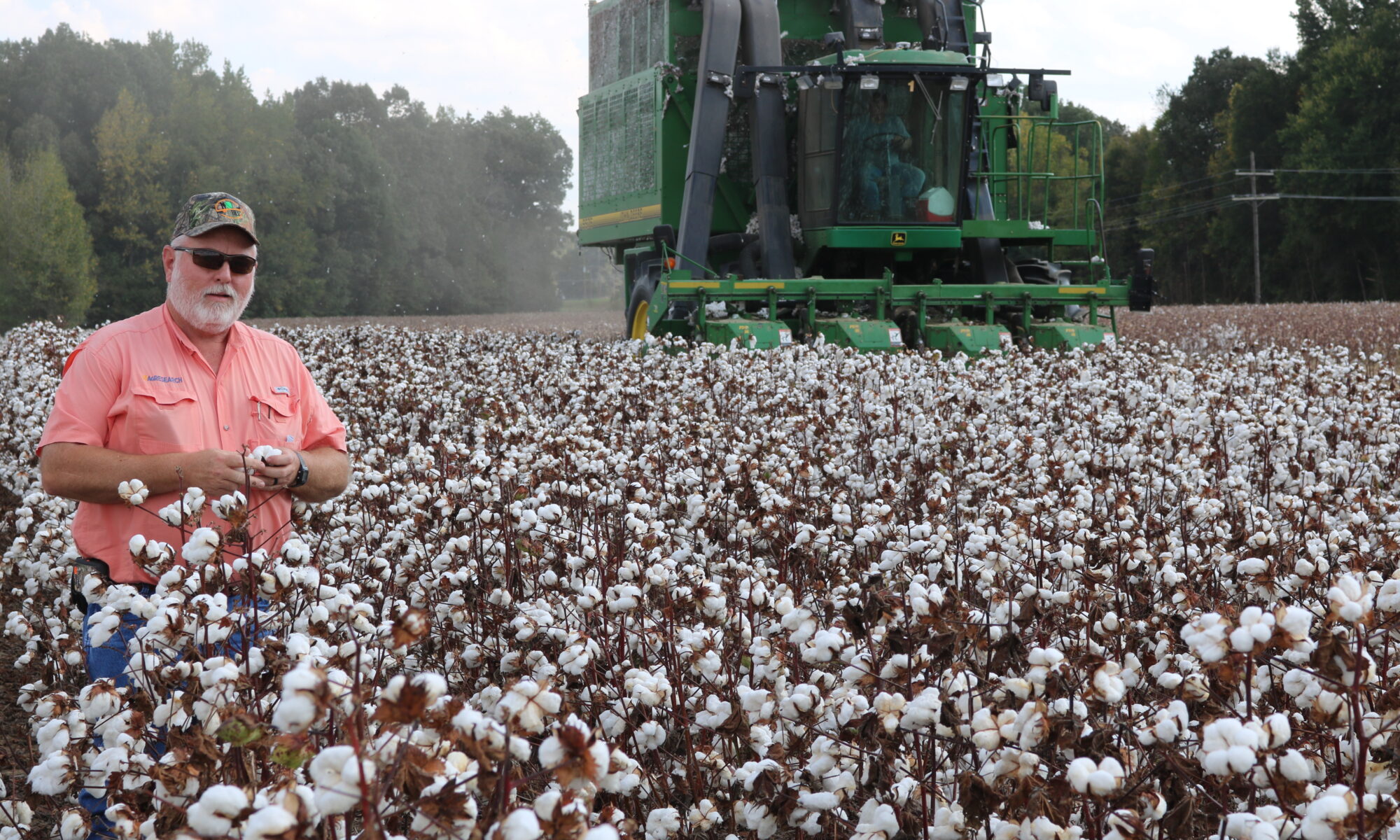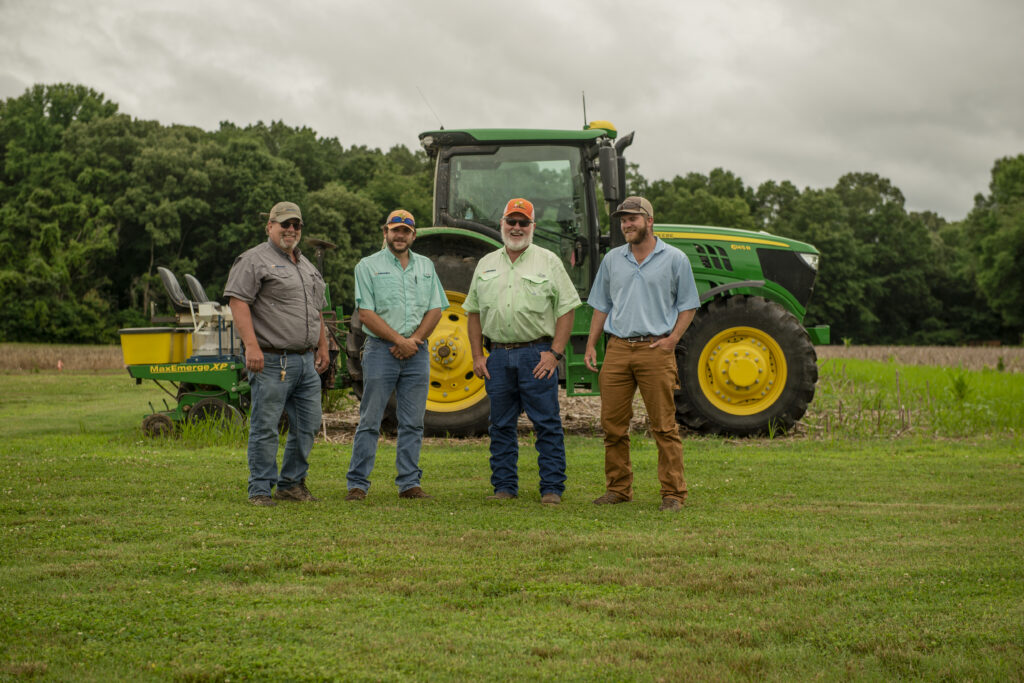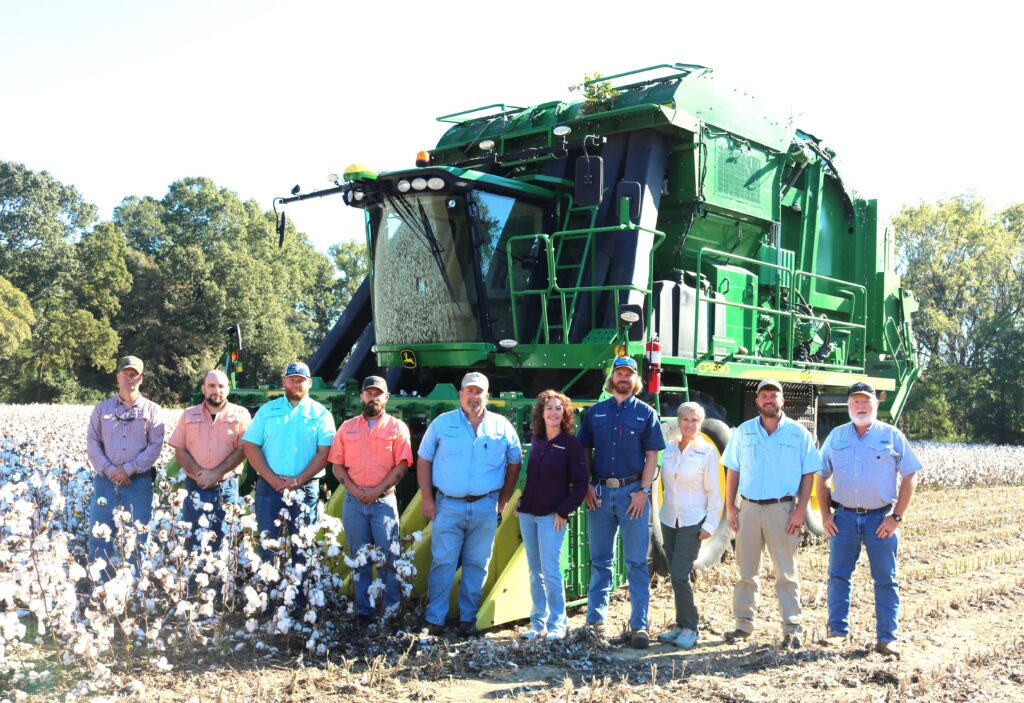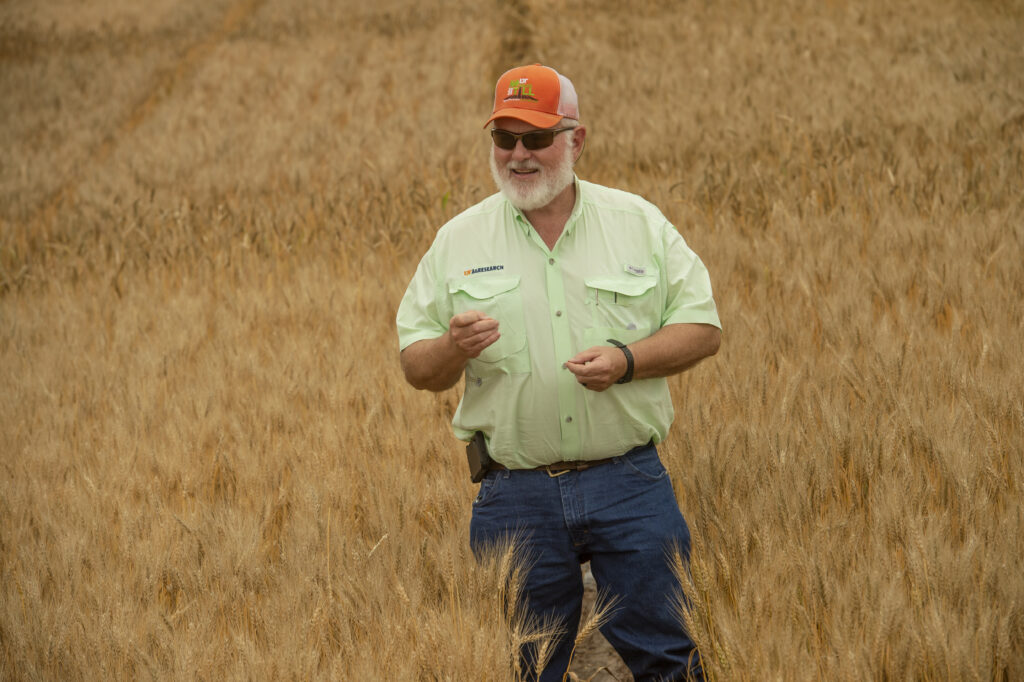
AgResearch and Education Center at Milan director carries a legacy of agricultural research
Where are you from, and how did your career lead you to UTIA?
I was born in Knoxville, but our family moved to Jackson, Tennessee, when I was three weeks old when my dad took a job at the West Tennessee Experiment Station (WTES), now West Tennessee AgResearch and Education Center, as a research horticulturalist. Thirteen years later, my dad was named the superintendent at WTES, and we moved to the station, where we lived until I went to college at UT Knoxville. At the age of 16, Tom McCutchen, superintendent at the Milan Experiment Station, hired me as a student worker during the summers, and I spent the next six summers working there. So, as we begin 2024, I will enter my forty-fifth year of working in AgResearch, and through all but six of those years, I have been involved in conducting research at Milan! I sometimes feel like I was born into it, and I guess in a sense I was, but it is really all I have ever done.
I began my college career at UT Knoxville and received my BS in plant and soil science and then followed that up with MS and PhD degrees in weed science under the direction of Dr. Robert Hayes, where I continued to conduct research at Milan, Jackson, and other sites as part of my degree programs. I then accepted a position in my dream job with DuPont Agriculture Products in Lincoln, Nebraska, in January of 1993 and spent five years researching herbicides and insecticides, where I got a great exposure to Midwest agriculture. In November of 1997, I came home to accept the position of superintendent of the Milan Experiment Station and Martin Experiment Station. I recently completed my twenty-sixth year in Milan. I served as superintendent of the Martin Station as well until UT transferred that facility to UT Martin for use as a teaching farm.
What is your role within UTIA, and what do you do on a typical day?
I am currently the Director of the AgResearch and Education Center at Milan where I lead a staff of ten in support of faculty research in row crops grown in West Tennessee, with an emphasis on no-tillage crop production.
I don’t think there is such a thing as a typical day, but it helps to be somewhat flexible and adaptable in order to meet the demands of the job. I remember hearing my dad say to someone once “you don’t have to be crazy to do this job – but it helps!” That’s not exactly true, but it can get interesting some days with multiple requests and demands from numerous individuals on an array of topics. But ultimately, I see my position as a support role for the faculty who are conducting research at our center, and my job is to facilitate their research and remove as many roadblocks as possible that might interfere with their research. So what does that mean? I work with our staff, try to anticipate problems or issues that might arise, constantly observe and evaluate our research infrastructure (including staff, land, facilities, equipment, etc.), and try to maintain all of these in top shape, ready to go to work and accomplish our goals. I am active in our community and maintain relationships with many individuals both inside and outside of agricultural circles. I try to share our story (and it is a good one!) whenever I have an opportunity, especially with those outside our traditional agricultural clientele. We have a great story to tell, and I think we should all do a better job of sharing that story whenever we have the opportunity! Internally I cultivate relationships with our staff, and I am fortunate to work with a great group of people at Milan! In addition, we build relationships with faculty (both AgResearch and Extension) and strive to help them meet their objectives while also providing honest input about our capabilities at Milan and the resources that are available to them. We typically have twenty to twenty-five faculty conducting research every year and often have over 170 research trials each year.
And like many other jobs, I can have my day planned out, and then it all changes because of a phone call, visit to our office, the weather, equipment breakdowns, etc., etc., etc.! Did I mention that it helps to be flexible?

Why did you choose to pursue a career in agricultural research?
I’m not sure if I chose it or it chose me. My grandparents on my dad’s side farmed in West Knoxville and had a small farm where they grew tobacco, truck crops, and beef cattle. Every summer before I started working at Milan, I would go up in August and cut tobacco, haul hay, and work with cattle, so I had some background in those types of ag enterprises. My dad had a greenhouse business on the side, so I grew up working in greenhouses, but that was not my passion. The neighbor across the field from the greenhouses was one of the largest farmers in Madison County at the time, and I recall working in the greenhouses and wishing I could be out there helping them farm with that big equipment. Then, during those six summers working on the summer crew at Milan, I spent many hours with a hoe in my hand chopping weeds, or maybe a hand-held rope wick applicator wiping Roundup on johnsongrass, or in the later years a backpack sprayer spraying this new herbicide called Poast that would actually kill johnsongrass in Soybeans, and spraying was so much easier than chopping or rope-wicking. I think here is where my desire to go into weed science was born. Fortunately, I had that opportunity and got to go into research with DuPont in Nebraska, but then the opportunity came along to come home. Although I loved my job in the agriculture chemical industry, I have enjoyed my time at Milan and never regretted the decision to join UT.
What is the most fulfilling aspect of the work you do?
Dr. Roland Mote, retired Associate Dean for AgResearch used to say “we believe that the work done at our ten AgResearch and Education Centers positively impacts every Tennessean every day, even if they aren’t actively involved in production agriculture.” We use that quote often, and it pretty sums up why we get up and come to work every day. We believe that the work we do matters. We take pride in producing quality scientific data that is used to provide solutions to problems encountered by our clientele. So even the smallest details matter when implementing a research trial, and we strive to conduct all of our research with excellence.
What has been your proudest moment while working for UT AgResearch?
That’s a hard question, and is kind of like picking which one of your kids you love the most! There are many possibilities, but probably the most satisfying is helping to lead a team of folks including our Milan staff, along with various research and Extension faculty, as we all collaborate to discuss an issue, discuss all the possibilities for addressing the issue, formulate a plan for conducting the research, and then see the research come together to produce meaningful results.

Or maybe it is at the end of the day after another successful Milan No-Till Field Day where we have had literally hundreds of UT faculty and staff (along with several non-UT personnel), come together after months of planning, preparation, and hard work to see the successful sharing of information on dozens of research trials across many aspects of production agriculture to a broad range of clientele from across the state, throughout the US, and around the world, and knowing that all these great folks pulled together in a single event to make a difference! Or perhaps it is the privilege of leading a wonderful staff at Milan, who happen to be the youngest group I have ever worked with, and help mentor them as they broaden their skills, knowledge, and expertise about no-till agriculture, operation of equipment, agronomic practices, research methods, maybe even some life skills, and encouraging them to make sure that they take care of the really important stuff in life, like spouses and significant others, families, finances, work-life balances, etc. And watching them grow, mature, get married, have families, and go and do great things!
Why is no-till agriculture important?
The UT AgResearch and Education Center at Milan is somewhat famous for being where no-till agriculture in Tennessee was developed, and that was due to the efforts of Tom McCutchen and a team of researchers who dedicated themselves to making this system successful in order to reduce the harmful effects of soil erosion. Before the development of no-till, Tennessee had the highest rates of soil erosion in the nation, and we were losing forty to fifty acres/year of topsoil off of our sloping land. Soil scientists have determined that it takes about one thousand years to form one inch of topsoil, and we were losing in three to four years what took one thousand years to form. This simply was not sustainable. In addition, our soils in West Tennessee were blown in eons ago, and consist of loess (wind-blown silt) that was deposited over a coastal plain sand. Since sand is inert, it doesn’t break down into topsoil, so when our West Tennessee topsoil is gone, we are back to farming in beach sand. Fortunately, McCutchen and others recognized this and worked to learn how to farm while protecting the topsoil. Now ninety-five percent of the acres in Tennessee are farmed using some form of conservation tillage. In doing so, our farmers have preserved the topsoil, kept our rivers and streams clear, reduced fuel and use, reduced operator time due to fewer trips across the field, and continued to increase yields while preserving topsoil and water quality. So, it has truly been a win-win!
What is one of your favorite experiences you have had while working at the AgResearch and Education Center at Milan?
Probably the amazing development of technology that I have experienced in my forty-five years of being involved in AgResearch. I mentioned earlier that when I started working at Milan in 1980, I spent a lot of time with a hoe in my hand chopping weeds. Fast forward a few years and we saw Roundup Ready technology arrive that made weed control easy for the first time in history. Similar developments occurred in entomology with the development of Bt Crops for control of worms and development of pyrethroid insecticides for control of other insect pests. Boll weevil eradication got rid of the boll weevil and some of the toxic products that had been used for years to control them. Then we started hearing about GPS and how it might be used in agriculture leading to very accurate field maps, followed by yield mapping technology and then auto steer technology, variable rate applications of fertilizer, lime and crop protection chemicals, the use of drones for crop scouting, variable rate irrigation, and the list goes on and on.
On the equipment side, I remember people hand-picking cotton when I was growing up, and now it is harvested with a machine that is twenty feet wide running 5.5 miles an hour through the field, and that is quite a change! I tell my young co-workers that I feel like the advancements that they will experience in their careers will far exceed what I’ve experienced in my career! It has been exciting to get to participate, even in a very small way, in the evaluation and development of many of these technologies and should make our newer research faculty extremely excited about the future. We know we have an increasing population occupying a decreasing land base, so we have to continue to produce more with less in order to meet the food, fiber, and fuel demands of the future. AgResearch will have to lead the way for this to occur, but I am confident that we will meet those challenges!
What is your favorite crop to study and why?
All the crops we have studied (including dozens of minor crops) have all been interesting, but my favorite is probably cotton. I began my professional career in Nebraska with millions of acres of corn and soybeans and enjoyed it thoroughly, but cotton is unique in that it is only grown in a double-handful of southern states. It requires a great deal of management for controlling pests, managing fertility, applying growth regulators, and selecting boll openers and defoliants to prepare the crop for harvest. It’s often said that many of these decisions involve “more art than science”, but we strive to apply science to make these decisions more straightforward for our producers. And when it all works out, I don’t think any crop is more beautiful than a big field of white, fluffy cotton on a bright fall day right before the picker goes through it.
What is a project you and your team are currently working on that you are excited about?
We have several projects ongoing with Dr. Avat Shekoofa looking at crop water usage, drought tolerance, and irrigation efficiency. I believe that water management may be one of the next great research frontiers. We are blessed in Tennessee with abundant ground and surface water, but if we look to our colleagues on the west coast, we see that they walk a fine line between having enough water to survive and total drought. So, we need to do a better job of managing the water that we have. Avat’s research uses a great deal of technology like Variable Rate Irrigation, GPS Systems, drones, and soil moisture sensors to study the impacts of various irrigation schemes, different crop types and their efficient use of water, and other means that may allow us to use water more judiciously.
What do you like to do outside of work and/or what is a fun fact about yourself that your colleagues may not know?
I have way too many interests and not enough time. But outside of work I enjoy hunting, fishing, gardening, tending to my lawn, a little bit of cooking, seeing my wife and kids do great things in their respective careers, and watching other friends and families succeed and have impactful contributions to society.
Many people would not believe that I am an extremely strong introvert, but it is true. I enjoy meeting and visiting with people, but I absolutely have to have my “alone-time,” thus my love of deer hunting from my deer stands that I often refer to as “Therapy Centers” and spending time in my garden.

